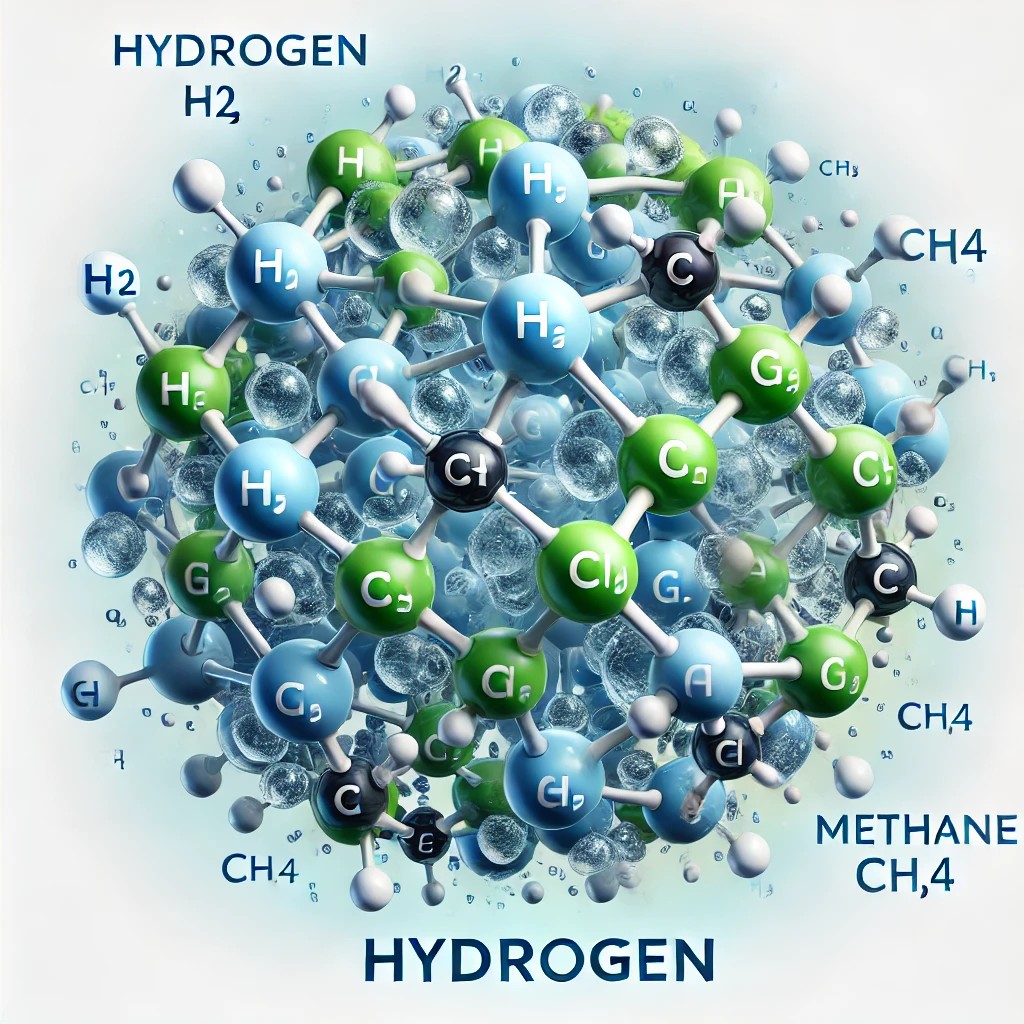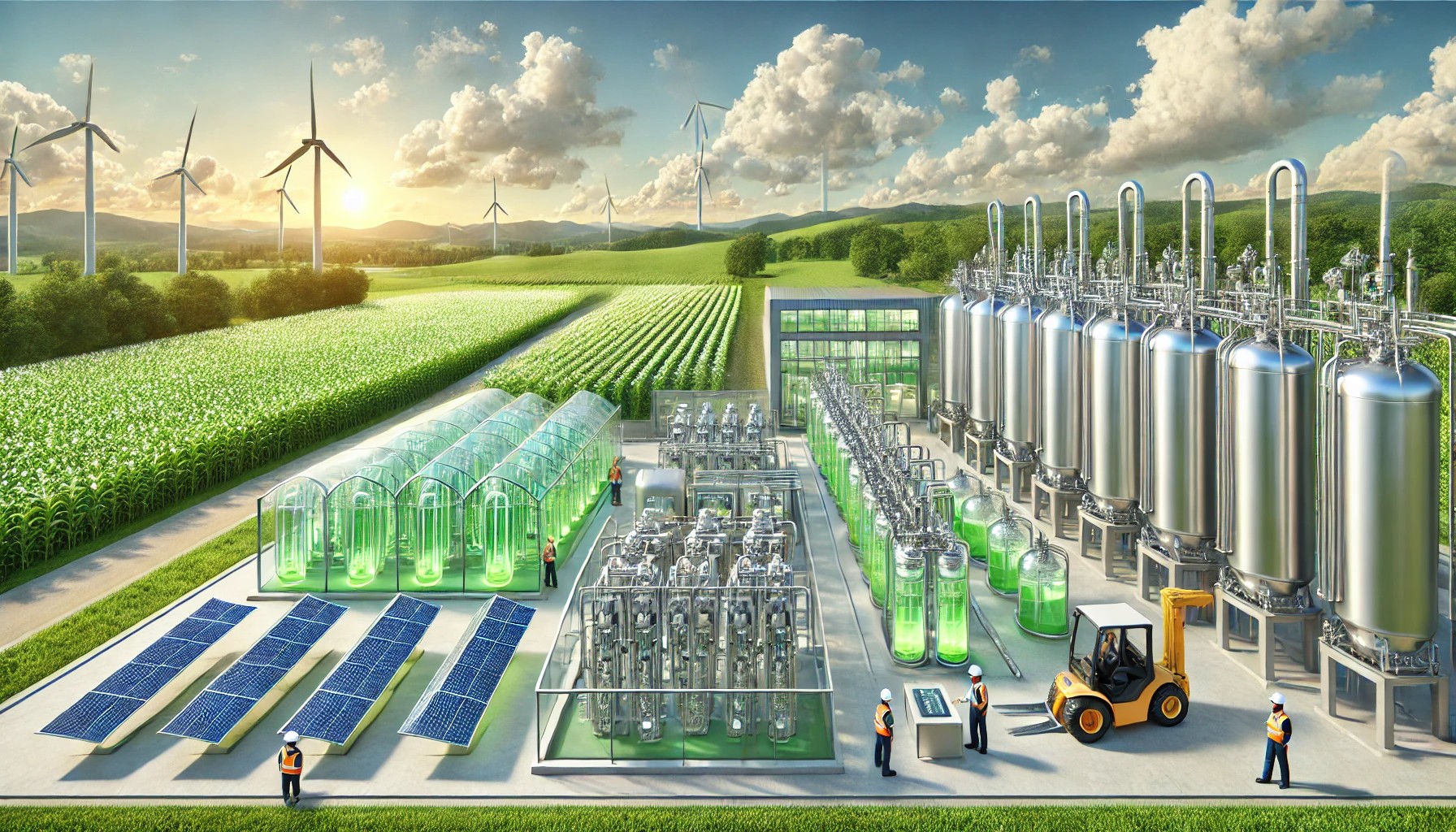As the world races toward a more sustainable future, the search for cleaner, more efficient fuels has never been more urgent. Amid rising concerns over climate change and the need to reduce carbon emissions, innovative solutions are emerging that promise to reshape the energy landscape.
The growing demand for sustainable fuel alternatives has become one of the central challenges of our time. As governments, industries, and individuals strive to reduce their environmental impact, cleaner energy sources are essential to meeting the world’s increasing energy needs. Among these innovative solutions, Hythane—a promising blend of hydrogen and methane—emerges as a potential game-changer. By combining the clean-burning properties of hydrogen with the energy density of methane, Hythane offers a unique opportunity to reduce greenhouse gas emissions while supporting a transition toward greener energy. With its potential to revolutionize industries ranging from transportation to power generation, Hythane stands at the forefront of the clean energy movement, offering hope for a sustainable, low-carbon future.
Understanding Hythane
Hythane is a fuel blend that combines hydrogen (H2) and methane (CH4) in specific proportions. Typically, Hythane is composed of 20-30% hydrogen and 70-80% methane. This combination creates a cleaner alternative to conventional fossil fuels, offering the benefits of hydrogen’s low-emission properties and methane’s higher energy density. The fuel’s chemical composition makes it an ideal candidate for reducing carbon emissions in several sectors, especially transportation and power generation.
Hydrogen, as the lightest element on Earth, is known for its ability to burn cleanly, producing only water vapor when combusted. It’s a key player in the quest for zero-emission technologies. On the other hand, methane, the primary component of natural gas, has a higher energy content per unit compared to hydrogen. While methane does contribute to greenhouse gas emissions when burned, its combustion produces less carbon dioxide than coal or oil, making it a more environmentally friendly option.
When hydrogen and methane are blended, the result is Hythane—a fuel that combines the best of both worlds. The hydrogen helps reduce the carbon intensity of methane, while the methane ensures a stable, energy-dense fuel. This blending process enhances the fuel’s performance, making it more viable for use in existing infrastructure while helping achieve significant reductions in emissions.
The Science Behind Hythane
The blending process of hydrogen and methane into Hythane is relatively simple but requires precise control over the ratio to optimize its combustion properties. The chemical reaction that occurs when Hythane is burned results in the production of water vapor and carbon dioxide, with a reduced amount of CO2 emissions compared to pure methane. This reduced carbon output is what gives Hythane its environmentally friendly edge.
In terms of energy output, Hythane is more efficient than pure hydrogen, which has a lower energy density. Methane, while energy-dense, produces more CO2 when burned. The combination of these fuels allows Hythane to offer a balanced mix of clean-burning hydrogen and the energy density of methane. This efficiency makes Hythane a promising alternative fuel, particularly in applications where high energy output is essential, such as in vehicles or industrial processes.
Moreover, the properties of Hythane in terms of emissions are considerably lower than pure methane. While methane still produces CO2 upon combustion, the presence of hydrogen reduces the carbon intensity of the fuel, leading to a significant reduction in greenhouse gas emissions. This makes Hythane a crucial part of the conversation surrounding the future of clean energy.
Environmental Benefits of Hythane
The environmental benefits of Hythane are significant. By blending hydrogen with methane, the fuel produces fewer greenhouse gases, primarily reducing the amount of carbon dioxide released into the atmosphere. This makes Hythane an attractive option in the fight against climate change. Hydrogen itself, when burned or used in fuel cells, only produces water vapor as a byproduct, making it a nearly emissions-free energy source.
Furthermore, by utilizing Hythane in place of traditional fossil fuels, we can contribute to cleaner air quality. Methane, while still a greenhouse gas, produces less carbon dioxide than coal or oil when burned, and the hydrogen component ensures that fewer harmful pollutants, like nitrogen oxides (NOx), are emitted. This reduction in pollutants is essential for improving urban air quality and meeting global climate goals.
Hythane supports the global transition to cleaner energy by reducing dependence on coal and oil, which are major contributors to carbon emissions. As the world moves toward a carbon-neutral future, the adoption of fuels like Hythane plays a crucial role in reducing the energy sector’s impact on the environment.
Hythane’s Role in the Energy Sector
Hythane’s potential role in the energy sector is vast. In the transportation industry, Hythane-powered vehicles, such as buses and trucks, are already being tested and used in some regions. These vehicles can run on compressed Hythane (CH4/H2 blend), offering reduced emissions compared to traditional diesel or gasoline-powered engines. The energy density of methane ensures that these vehicles can travel long distances while benefiting from the clean-burning nature of hydrogen.
Beyond transportation, Hythane also has significant potential in power generation. Power plants that currently rely on natural gas could switch to Hythane to reduce their emissions without requiring substantial infrastructure changes. The existing natural gas infrastructure could accommodate Hythane, making it an attractive option for transitioning to cleaner energy sources without extensive overhaul costs.
The integration of Hythane with existing natural gas pipelines further facilitates its widespread adoption. Since methane is a primary component of natural gas, the transition to Hythane does not necessitate significant changes to the distribution system, making it an economically viable alternative for many industries.
Challenges and Barriers
Despite its potential, the adoption of Hythane on a large scale is not without challenges. One major hurdle is the technological complexity of storing and transporting a hydrogen-methane blend. Hydrogen, being the smallest and lightest molecule, presents unique challenges in terms of storage, requiring high-pressure containers to ensure its safe transport and use.
The cost of producing Hythane is another factor that could limit its widespread adoption. Hydrogen production, particularly green hydrogen through electrolysis, remains expensive. However, as technology advances and economies of scale are achieved, the cost of producing hydrogen is expected to decrease, which will make Hythane more economically feasible.
Furthermore, regulatory challenges need to be addressed to ensure Hythane meets safety and performance standards. Establishing uniform guidelines for Hythane usage across industries will be crucial for its successful implementation.
Current Research and Development
Several projects worldwide are focused on making Hythane a viable fuel option. Ongoing research includes improving the efficiency of hydrogen production, exploring better methods for blending hydrogen with methane, and developing more advanced storage systems. Notable companies and research institutions are working on optimizing Hythane for different applications, including transportation and industrial power generation.
Collaborations between energy companies, automakers, and governments are also accelerating the development of Hythane technology. These partnerships are essential to scaling up production, ensuring the safe integration of Hythane into existing infrastructure, and lowering the cost of the fuel.
The Future of Hythane and Blend Fuels
Hythane holds the potential to become a mainstream fuel, especially as the world shifts toward renewable energy and sustainable practices. As the demand for low-emission fuels continues to rise, Hythane can play a key role in the global energy mix. Its ability to work with existing infrastructure while offering cleaner, more efficient energy makes it an attractive alternative for industries seeking to reduce their carbon footprint.
The future of Hythane will depend on continued innovation, particularly in fuel production and storage technologies. As these technologies evolve, the production of Hythane may become more cost-effective and widely adopted, helping meet global energy demands while reducing environmental impacts.
Conclusion
Hythane represents a promising solution in the push for cleaner, more sustainable energy. Its combination of hydrogen and methane offers a balanced approach to reducing emissions while maintaining energy density. As research and development continue, and as challenges such as cost and infrastructure are addressed, Hythane has the potential to play a key role in the future of renewable energy. By contributing to cleaner air and supporting the global transition to low-carbon energy, Hythane could be a major player in the clean energy revolution, helping to create a more sustainable world for future generations.
Frequently Asked Questions (FAQs)
- What is Hythane? Hythane is a blend of hydrogen and methane, typically consisting of 20-30% hydrogen and 70-80% methane. This combination creates a fuel that has the clean-burning properties of hydrogen while maintaining the energy density of methane, making it a promising alternative to traditional fossil fuels.
- How is Hythane produced? Hythane is produced by blending hydrogen with methane in controlled proportions. The hydrogen can be produced through methods like electrolysis or steam methane reforming, while methane is typically sourced from natural gas. The blending process optimizes the fuel’s combustion properties, making it cleaner and more efficient than pure methane.
- What are the benefits of using Hythane as a fuel? Hythane offers several benefits, including reduced carbon emissions compared to traditional fossil fuels like coal and oil. It combines the clean-burning properties of hydrogen with the energy density of methane, resulting in a fuel that is both efficient and environmentally friendly. It also contributes to better air quality and supports global climate goals by reducing greenhouse gas emissions.
- Can Hythane be used in existing natural gas infrastructure? Yes, one of the major advantages of Hythane is its compatibility with existing natural gas infrastructure. Since methane is a key component of natural gas, Hythane can be transported and used within the same pipelines and storage systems, making it easier to integrate into the current energy system.
- What industries can benefit from Hythane? Several industries stand to benefit from Hythane, particularly transportation and power generation. Hythane-powered vehicles, such as buses and trucks, can significantly reduce emissions. Additionally, power plants that use natural gas can switch to Hythane to lower their carbon footprint without major infrastructure changes. The industrial sector could also adopt Hythane for various energy-intensive processes.
- What are the environmental impacts of Hythane? The environmental impact of Hythane is primarily positive. The blending of hydrogen with methane reduces the carbon dioxide and other harmful pollutants emitted during combustion. Hythane also helps reduce greenhouse gas emissions, contributing to cleaner air and supporting efforts to combat climate change.
- What challenges does Hythane face? Some of the challenges associated with Hythane include the technological complexity of storing and transporting hydrogen, which requires high-pressure systems. Additionally, hydrogen production, particularly green hydrogen, remains expensive, which could make Hythane costly in the short term. Regulatory and policy challenges also need to be addressed to ensure safe and widespread adoption.
- Is Hythane a viable option for large-scale adoption? While Hythane holds great promise, large-scale adoption will depend on overcoming challenges related to cost, technology, and infrastructure. Ongoing research and development are focused on improving hydrogen production, fuel efficiency, and storage systems. As these issues are addressed, Hythane has the potential to become a mainstream fuel.
- How does Hythane compare to hydrogen and methane individually? Hythane combines the best features of both hydrogen and methane. Hydrogen burns cleanly, producing only water vapor, but has a lower energy density. Methane has a higher energy content, but its combustion results in higher carbon emissions. Hythane offers a balanced solution, providing improved energy density and reduced emissions compared to pure methane.
- What is the future of Hythane in the energy sector? Hythane has the potential to play a significant role in the future of clean energy. It offers an efficient, environmentally friendly alternative to traditional fossil fuels, particularly in transportation and power generation. With continued technological advancements and cost reductions, Hythane could become a key component in the global transition to renewable energy and a low-carbon future.


